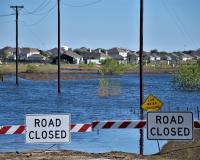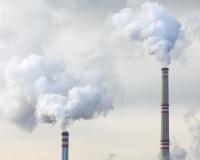
Vibrant Environment
Environmental Justice
All | Biodiversity | Climate Change and Sustainability | Environmental Justice | Governance and Rule of Law | Land Use and Natural Resources | Oceans and Coasts | Pollution Control

Former railroad turned elevated park, the New York City High Line presents a prime example of creating new green spaces to beautify, ameliorate, and revitalize surrounding communities. Although certainly one of the city’s most popular parks, the High Line also serves as the culprit for a sharp 35% increase in adjacent housing values.

What products did you use this morning as you got ready for your day? Shampoo? Soap? Deodorant? Makeup? Likely at least one of these, along with other personal care products. The Environmental Working Group found that women in the United States use an average of 12 personal care products each day, and men an average of six. And, while many of the chemicals in these products likely pose minimal risk, some chemicals found in personal care products have been linked to cancer, reproductive harm, and other health problems. Further, women of color face disproportionate impacts. On average, women of color use more beauty products than white women, and the beauty products they use disproportionately expose them to hazardous ingredients.

Despite popular belief, natural hazards are not “great equalizers.” Environmental burdens fall disproportionately on marginalized groups. These inequities stem from legacies of racial injustice and systemic income disparities that have caused certain neighborhoods to have both poor infrastructure and limited access to financial resources, creating greater threats from hazard-related damage and difficulty with recovery efforts.

This summer, the Miami-Dade County’s Office of Resilience conducted a series of workshops inviting the community’s input into the drafting of the county’s climate action strategy plan. These workshops were held to offer community members the opportunity to comment on local policy measures as well as shape the direction of current and future policymaking by offering suggestions and ideas. Rather than simply checking off boxes for expectations of citizen engagement by local government, the stated goal of these workshops is to produce an accessible avenue for community members from all identities, especially those that have historically faced discrimination, to take the lead on local climate adaptation and mitigation efforts. In accomplishing this goal, language accessibility is a key consideration to ensure effective citizen engagement and maximized impact.

For Environmental Law Institute President Scott Fulton, the inability of the United States’ environmental policies and programs to bestow benefits across communities of color and the disadvantaged stands as a major shortcoming of our environmental protection system to date. But, as discussed at ELI’s 7th GreenTech webinar, on “Technology and Environmental Justice,” the explosion of monitoring technologies, big data, expanded analytical abilities, and other technologies raises the possibility, albeit with caveats, that those developments can help solve long-standing environmental justice (EJ) challenges. Discussing the issues during the July 29, 2021, webinar were the following featured experts: White House Council on Environmental Quality (CEQ) Senior Director for EJ, Dr. Cecilia Martinez; California EJ Alliance (CEJA) Green Zones Program Manager, Tiffany Eng; Tennessee State University (TSU) Associate Professor Dr. David Padgett; Chesapeake Bay Foundation (CBF) EJ Staff Attorney, Taylor Lilley; and ELI Visiting Scholar LeRoy C. (Lee) Paddock.

Climate change poses unique dangers and challenges for people with disabilities. Unfortunately, despite wide recognition of the vulnerabilities of people with disabilities to climate change, disability perspectives and needs remain largely excluded from climate adaptation and mitigation efforts. Effective and inclusive climate action planning is essential to protecting the 26% of Americans who experience a disability from the most dangerous aspects of climate change.

This is Part 2 of a two-part blog series on climate change and its impact on indigenous peoples in the United States. Part 1 introduced the impacts of climate change on indigenous communities, while Part 2 provides specific examples of how these communities are responding in order to protect their land, people, and resources.

This is Part 1 of a two-part blog series on climate change and indigenous peoples in the United States. Part 1 introduces the impacts of climate change on indigenous communities, and Part 2 looks more in depth at how these communities are responding in order to protect their land, people, and resources.

On May 26, Engine No. 1, an activist hedge fund owning 0.02% of ExxonMobil’s stock, led a shareholder revolt against the oil giant, ousting three of Exxon’s board members despite opposition from senior management. The change was part of a recent tide of losses for the global oil industry. Chevron’s shareholders also displayed an intolerance for corporate negligence toward climate change when they passed a resolution mandating the company to account for and cut down on Scope 3 emissions, which are released in the process of oil combustion. These emissions make up a far larger share of the company’s carbon footprint than emissions from operations and extraction. Together, these shareholders are jointly calling on the oil industry to adapt its business model to align with a decarbonized economy.

Already under ever-increasing threats from climate change, the world faced another crisis in 2020: the COVID-19 pandemic. A public health emergency of this scale requires swift and effective policy action—but in many cases, the United States fell short, revealing ongoing failures to address systemic injustices exacerbated by the disease. In this month’s issue of ELR—The Environmental Law Reporter, members of the Environmental Law Collaborative, an affiliation of environmental law professors, examine the country’s legal responses to COVID-19, offering thoughts about pandemic ripple effects and their implications for environmental policy, as well as potential opportunities going forward. The article is excerpted from their book, Environmental Law, Disrupted, to be published by ELI Press later this year.